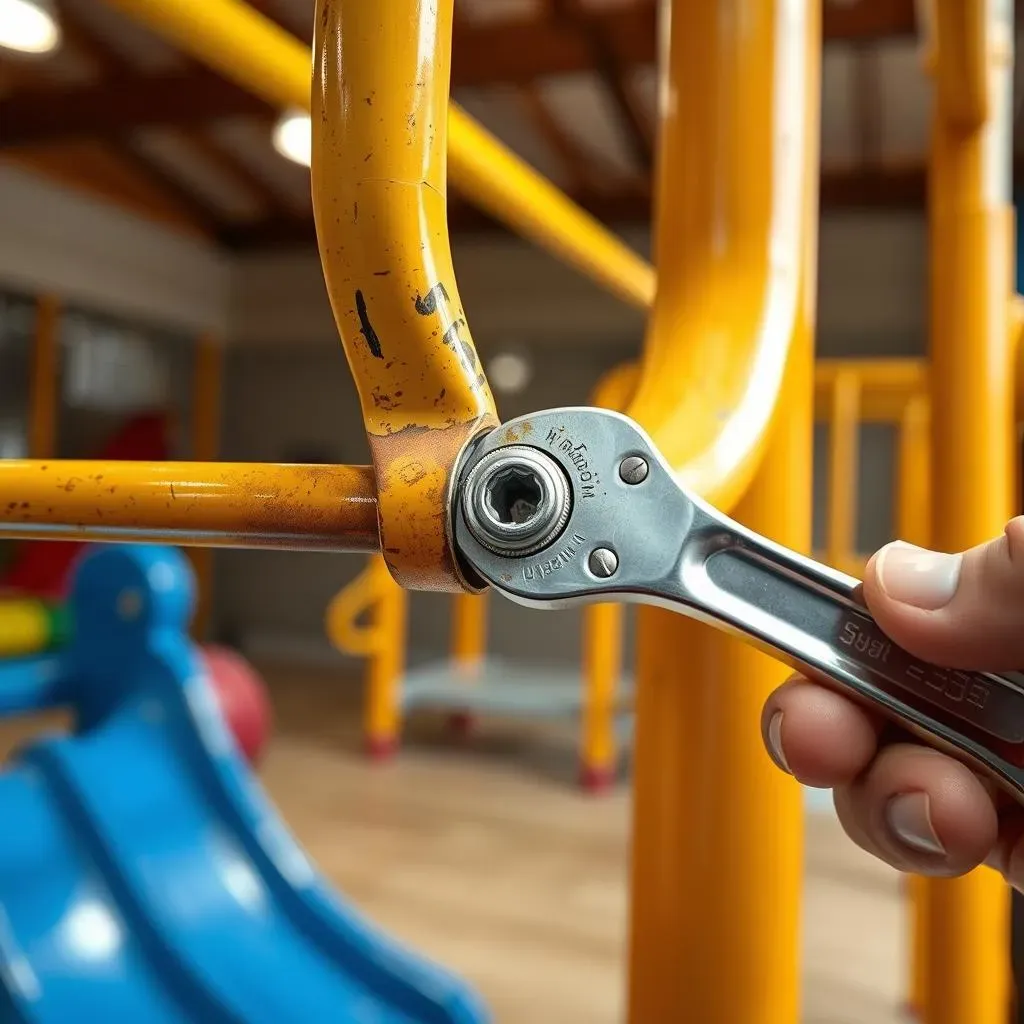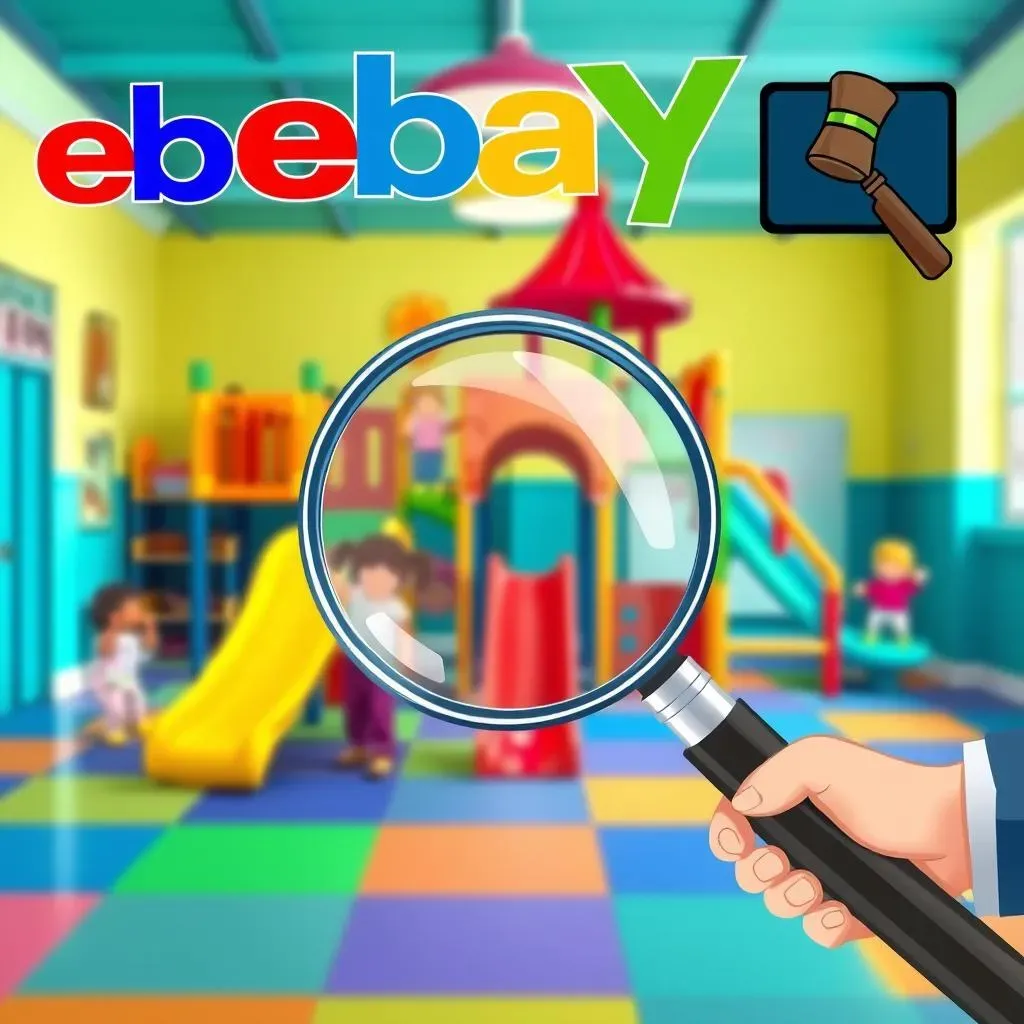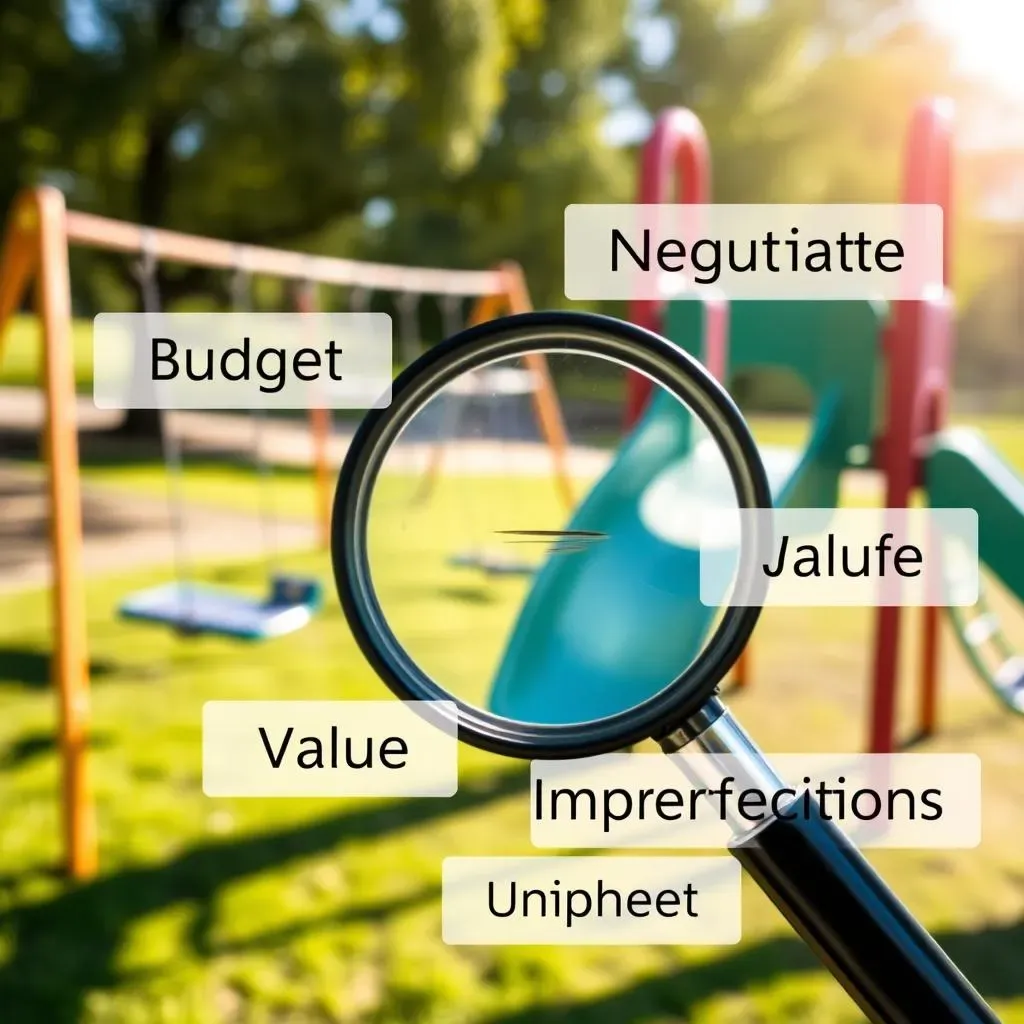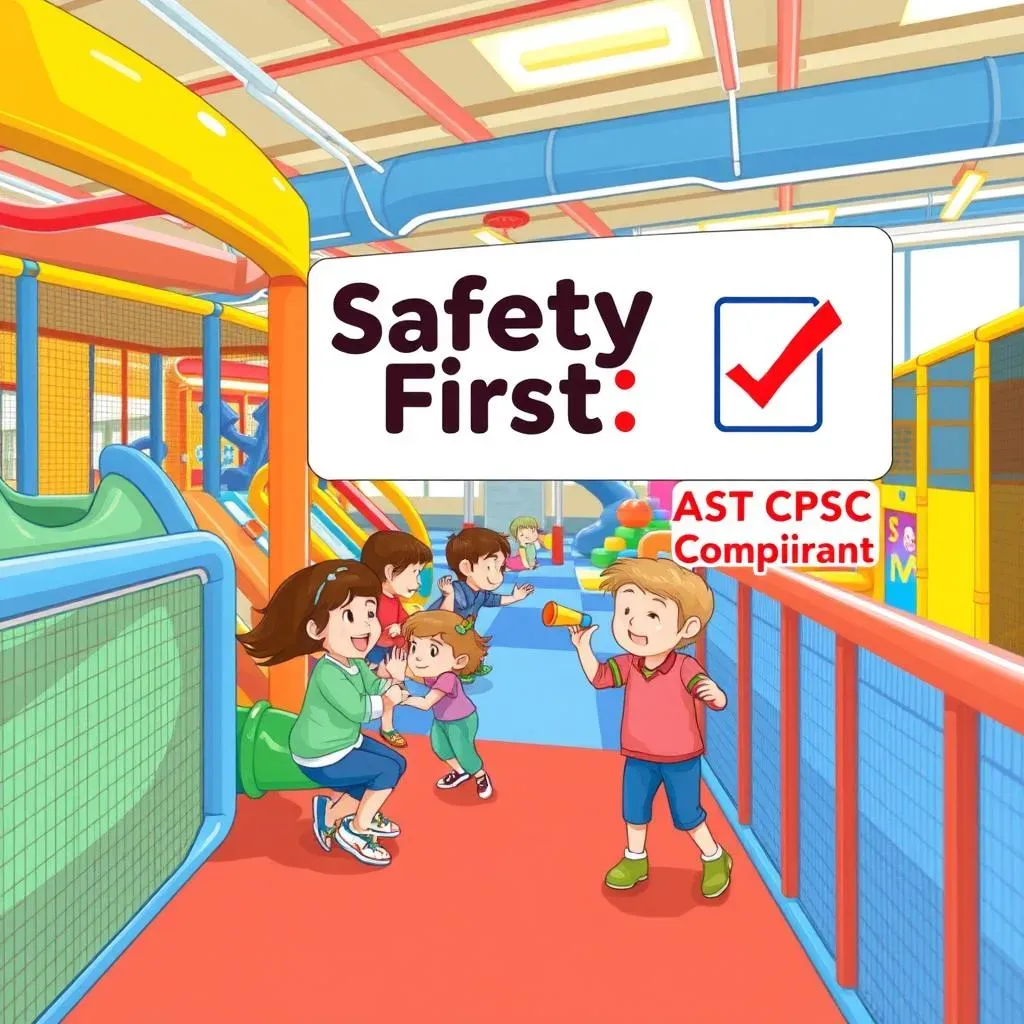Table of Contents
Dreaming of opening an indoor play haven without breaking the bank? Or maybe you're looking to upgrade your existing setup on a budget? Investing in used indoor playground equipment can be a smart move, offering significant cost savings compared to purchasing brand new. But before you jump in, it's crucial to navigate the used market with a keen eye and a solid plan. This guide is your ultimate playbook, diving deep into everything you need to know to snag the best deals on pre-owned equipment without compromising on safety or quality. We'll explore the compelling reasons to consider used equipment, from budget benefits to eco-friendly choices. Then, we'll equip you with a detailed checklist for inspecting potential purchases, ensuring they meet safety standards and offer lasting value. Finally, we'll reveal the best places to find hidden gems and provide expert tips for negotiating prices that work for you. Ready to turn your playground dreams into reality? Let's get started!
Why Consider Used Indoor Playground Equipment?

Why Consider Used Indoor Playground Equipment?
Let's face it, new indoor playground equipment can come with a hefty price tag. Starting or expanding your business requires smart financial decisions, and that's where used equipment shines. Opting for pre-owned structures can significantly reduce your initial investment, freeing up capital for other crucial aspects like marketing, staffing, or securing a prime location. Think of it this way: you could potentially acquire a larger, more elaborate play structure for the same price as a smaller, basic new one. It's all about maximizing your budget and getting the most bang for your buck. Plus, there's a certain satisfaction in giving a second life to perfectly good equipment, contributing to a more sustainable and eco-conscious business model.
Key Factors to Inspecting Used Indoor Playground Equipment

Key Factors to Inspecting Used Indoor Playground Equipment
Alright, so you're ready to dive in and check out some used playground equipment? Awesome! But hold your horses, because this is where the rubber meets the road. Inspecting used equipment isn't just a quick once-over; it's a thorough investigation to ensure safety and longevity. Start with the frame – look for any signs of rust, bending, or cracks. These are major red flags and could compromise the structural integrity of the entire setup. Pay close attention to connection points, where different parts of the equipment are joined together. Are the bolts tight? Are there any signs of wear or stress? Next, examine the soft play elements like foam padding, netting, and slides. Check for tears, rips, or excessive wear. Remember, kids will be climbing, sliding, and bouncing all over this stuff, so it needs to be in good condition.
Don't forget to check for missing or damaged hardware. Are all the safety caps in place? Are there any sharp edges or protrusions that could pose a hazard? It's also a good idea to ask the seller about the equipment's history. How old is it? How heavily was it used? Has it been properly maintained? The more information you can gather, the better equipped you'll be to make an informed decision. Finally, if possible, bring along a qualified inspector or engineer to give the equipment a professional once-over. They can identify potential issues that you might miss and provide valuable insights into the equipment's overall condition. Trust me, a little extra due diligence upfront can save you a lot of headaches (and money) down the road.
Inspection Area | What to Look For | Why It Matters |
|---|---|---|
Frame | Rust, cracks, bending | Compromised structural integrity |
Connection Points | Loose bolts, wear, stress | Potential for collapse |
Soft Play Elements | Tears, rips, excessive wear | Compromised safety and hygiene |
Hardware | Missing caps, sharp edges | Potential for injury |
Where to Find Used Indoor Playground Equipment for Sale

Where to Find Used Indoor Playground Equipment for Sale
Online Marketplaces: Your Digital Treasure Trove
The internet is your friend when hunting for used indoor playground equipment! Websites like eBay, Craigslist, and Facebook Marketplace can be goldmines, connecting you with sellers locally and nationally. These platforms offer a vast selection, allowing you to compare prices, assess conditions through photos, and communicate directly with sellers. However, exercise caution and do your due diligence. Always request detailed photos and ask specific questions about the equipment's history, condition, and any potential issues. Consider using secure payment methods and arranging for inspection before finalizing any purchase.
Don't underestimate industry-specific online marketplaces either. Some websites specialize in buying and selling used commercial equipment, including playground structures. These platforms often have stricter listing requirements and verification processes, providing an extra layer of security and assurance.
Auction Sites: Bid Your Way to Savings
Keep an eye out for auction sites, both online and local. Businesses that are closing down or upgrading often auction off their assets, including indoor playground equipment. This can be a fantastic way to score a great deal, but it requires a bit of strategy and patience. Set a budget beforehand and stick to it, avoiding bidding wars that can drive up the price. Remember to factor in the cost of transportation and any necessary repairs or modifications when calculating your maximum bid.
Also, look into government surplus auctions. Sometimes, public recreational facilities upgrade their equipment and put the old stuff up for auction. You might find some surprisingly well-maintained pieces!
Direct from Businesses: A Personal Touch
Don't overlook the possibility of buying directly from businesses that are upgrading or closing down. Reach out to local family entertainment centers, gyms with play areas, or even schools and daycare centers. They might be willing to sell their used equipment at a discounted price, and you could potentially negotiate a better deal than you would through a third-party marketplace. Plus, you'll have the opportunity to inspect the equipment in person and ask detailed questions about its history and maintenance.
Networking within the industry can also be beneficial. Attend trade shows or join online forums and connect with other playground operators. They might have leads on used equipment or know of businesses that are looking to sell. Remember, a little bit of networking can go a long way in finding the perfect used indoor playground equipment for your needs.
Source | Pros | Cons |
|---|---|---|
Online Marketplaces | Wide selection, convenient | Potential for scams, condition varies |
Auction Sites | Potential for great deals | Requires strategy, transportation costs |
Direct from Businesses | Negotiation potential, in-person inspection | Requires networking, limited availability |
Negotiating the Best Deal on Used Playground Equipment

Negotiating the Best Deal on Used Playground Equipment
Know Your Budget & Walk Away Point
Before you even start browsing, nail down your absolute maximum budget. This isn't just a "nice to have" number; it's your line in the sand. Factor in not only the price of the equipment itself but also transportation costs, potential repairs, cleaning, and installation. Once you have that number, determine your walk-away point – the price at which you're willing to walk away from the deal, no matter how tempting it may seem. Sticking to these limits will prevent you from overspending in the heat of negotiation. Remember, there's always another playground out there!
Also, research the fair market value of similar used equipment. Check completed listings on eBay or ask for quotes from multiple sellers to get a sense of the average price range. Arm yourself with this information, and you'll be in a much stronger position to negotiate effectively.
Highlight Imperfections & Ask Questions
During the inspection process, be meticulous and document any imperfections you find. Take photos of scratches, tears, rust, or any other signs of wear and tear. Use these imperfections as leverage during negotiation, pointing out the cost of repairs or replacements that will be necessary. Don't be afraid to ask the seller pointed questions about the equipment's history, maintenance, and any known issues. The more information you can uncover, the better equipped you'll be to justify a lower price.
Also, consider offering a slightly lower price than you're actually willing to pay, leaving room for negotiation. Be polite but firm, and always be prepared to walk away if the seller isn't willing to meet you at a reasonable price. Remember, negotiation is a two-way street, and the goal is to reach an agreement that benefits both parties. By being prepared, informed, and assertive, you can snag a fantastic deal on used playground equipment and create a fun and safe play space for kids!
Negotiation Tactic | Description | Benefit |
|---|---|---|
Set a Budget | Determine maximum spending limit | Prevents overspending |
Research Market Value | Find average prices for similar equipment | Provides leverage for negotiation |
Highlight Imperfections | Document damage and wear | Justifies lower price |
Ask Questions | Gather information about history and maintenance | Informs negotiation strategy |
Safety Standards and Regulations for Indoor Playground Equipment

Safety Standards and Regulations for Indoor Playground Equipment
ASTM Standards: Your Safety Foundation
When it comes to indoor playgrounds, safety isn't just a suggestion; it's the law. The American Society for Testing and Materials (ASTM) sets the gold standard for playground safety, and adhering to these guidelines is crucial. ASTM standards cover everything from the height of guardrails to the impact-absorbing properties of surfacing materials. Make sure any used indoor playground equipment you're considering meets the relevant ASTM standards, which vary depending on the type of equipment and the age of the intended users.
Don't just take the seller's word for it; ask for documentation proving compliance with ASTM standards. This could include test reports, certifications, or manufacturer's specifications. If the seller can't provide proof of compliance, that's a major red flag. Remember, the safety of the children who will be using the equipment is paramount, and cutting corners on safety is never worth the risk.
Always check with your local municipality or state for specific regulations regarding indoor playgrounds. These regulations may go above and beyond the ASTM standards and could include requirements for inspections, permits, or insurance. Failing to comply with these regulations could result in fines, penalties, or even the closure of your business. So, do your homework and make sure you're fully aware of all the applicable safety standards and regulations before you invest in any used indoor playground equipment.
CPSC Guidelines: A Helpful Resource
The Consumer Product Safety Commission (CPSC) also plays a vital role in ensuring playground safety. While the CPSC doesn't set mandatory standards like ASTM, they provide valuable guidelines and recommendations for playground design, installation, and maintenance. These guidelines cover a wide range of topics, including fall heights, entrapment hazards, and proper surfacing materials. Familiarizing yourself with the CPSC guidelines can help you identify potential safety hazards and ensure that your playground is as safe as possible.
The CPSC also investigates playground-related injuries and publishes reports on common hazards. Reviewing these reports can help you learn from past mistakes and avoid making similar errors in your own playground. Remember, safety is an ongoing process, and staying informed about the latest guidelines and best practices is essential for protecting the children who use your equipment.
Regular Inspections & Maintenance: Ensuring Ongoing Safety
Even if your used indoor playground equipment meets all the relevant safety standards and regulations, it's crucial to conduct regular inspections and maintenance to ensure ongoing safety. Develop a comprehensive inspection checklist that covers all aspects of the equipment, from the frame and connection points to the soft play elements and hardware. Conduct routine inspections at least once a month, and more frequently if the equipment is heavily used. Address any issues you identify immediately, whether it's tightening loose bolts, repairing tears, or replacing worn-out parts.
Keep detailed records of all inspections and maintenance activities. This documentation can be invaluable in the event of an accident or injury. It demonstrates that you're taking proactive steps to ensure the safety of your playground and can help protect you from liability. Consider hiring a qualified playground inspector to conduct an annual comprehensive inspection. They can identify potential issues that you might miss and provide valuable recommendations for improving safety.
Remember, safety is not a one-time thing; it's an ongoing commitment. By adhering to safety standards, following CPSC guidelines, and conducting regular inspections and maintenance, you can create a fun, safe, and enjoyable play environment for children of all ages.
Conclusion: Making Smart Choices with Used Indoor Playground Equipment
Investing in used indoor playground equipment can be a game-changer for your business or community project, offering a cost-effective way to create fun and engaging spaces for children. By carefully considering the benefits, conducting thorough inspections, exploring various sourcing options, and prioritizing safety, you can make informed decisions that lead to successful outcomes. Remember, a well-maintained and safe play area is an investment in the health and happiness of children, regardless of whether the equipment is brand new or gently used. So, go forth, explore the possibilities, and create a playground that sparks joy and fosters active play for years to come, all while staying within your budget!